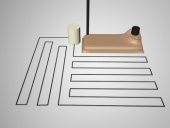
 1
1




projects blog http://thekulaproject.tumblr.com
 1
1





 1
1




If I did facilitate any under my direction it would always as a thick tile or paver system.
I have only co-facilitated folks that have chosen to do these and the minimum thickness I would suggest is 100mm, and they did have cracking issues.
Fibers yes, though you could get "fuzzing" and would need to sand smooth the floor. Hemp, hog hair, or recycled polypropylene are some possibilities.
I use wood almost exclusively as this is the most cost effective in most areas...Have you broken down you square meter cost yet of both of these side by side...including your labor?
projects blog http://thekulaproject.tumblr.com
 1
1




Rob Irish wrote:Is that because of personal preference that you don't like a lime finish, or is there a practical reason for this?
Rob Irish wrote:Just to clarify here, are you saying they had cracking issues with 100mm? Or was that a little typo and you meant to say they didn't have cracking issues at this size?
Rob Irish wrote:We've got a lot of Typha / Cattail here we collected for cob - would this be appropriate to use as a fibre?
Rob Irish wrote:...I haven't broken down all the costs yet...Labor seems like it would be more intensive with lime, but that it would last longer...Could you elaborate a bit on your approach for a wood floor?
 ...to write up a Post on Maru floors. Traditional Korean maru (maru=floor) floors, one form being Cheongmaru 청마루 have been around for millenia, and some are even of stone and allow for radiant heat underneath in the form of an Ondol 온돌 , which is something else I am planning a post topic on.
...to write up a Post on Maru floors. Traditional Korean maru (maru=floor) floors, one form being Cheongmaru 청마루 have been around for millenia, and some are even of stone and allow for radiant heat underneath in the form of an Ondol 온돌 , which is something else I am planning a post topic on.









|
They worship nothing. They say it's because nothing is worth fighting for. Like this tiny ad:
Learn Permaculture through a little hard work
https://wheaton-labs.com/bootcamp
|






